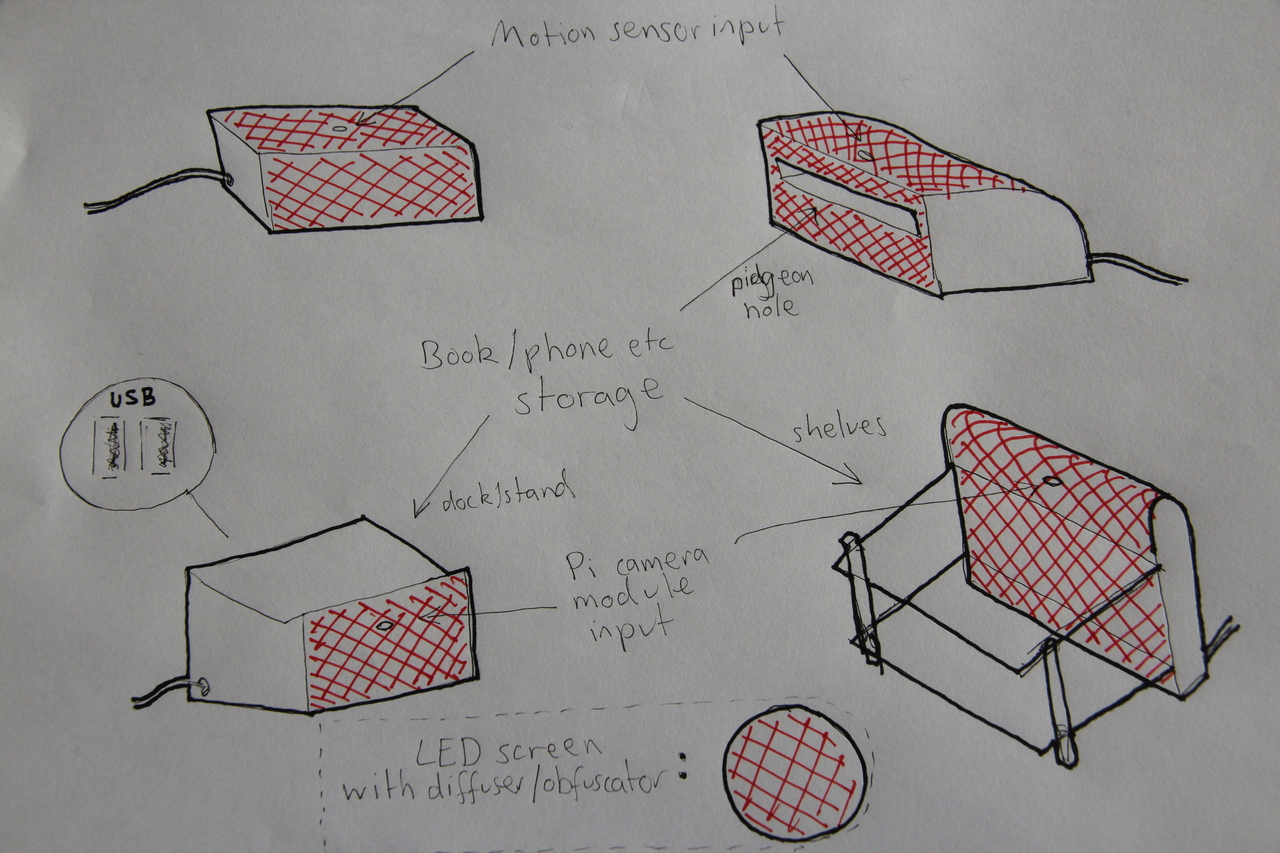Physical Computing Project Proposal
I plan to design and build a digital light for living spaces. The object’s exterior casing will feature addressable LEDs that effectively form a low-resolution screen, able to stimulate human observers with changing patterns. Responsivity, enabled by connecting an input to the system, will provide functionality too; it could sit on a bedside table as an alarm clock which illuminates in an increasingly annoying way until you wave your hand over a sensor to turn it off.

Electronics
I will use as few components as possible to make it work, as each extra part will add complexity and risk. The main requirements are:
- Single-board computer (e.g. Raspberry Pi) for the central logic
- Single-board computer (e.g. Arduino) for video data serialisation
- Addressable RGB LEDs (output)
- Power supply (PSU)
Two processor boards are needed because, unlike graphics processing, sending WS2812B RGB LED strip data is best done on a ‘real-time operating system’ (RTOS). My LEDs should be able to be controlled by the Teensy 3.2 board (if not the Arduino Uno) which run RTOS, while the Raspberry Pi running Linux can do everything else.
At least one of the following possibilities will be used to enable input/responsivity:
- Photoresistor
- PIR motion sensor
- Camera module
- Bluetooth (on the RPi)
Finally, the circuitry will need resistors to limit current passing through sensitive components, capacitors and transistors.
Design
Aesthetics
My main goal with the design is for the lamp to be self-contained (just 1 external cable for power), because it makes it easier to move and setup, while also being more attractive. Basically I want to design it with all the components hidden inside.
Another focus is on found objects, that is, making use of materials I found around me. Found objects have a history of use in art (see Marcel Duchamp), are available/free, and also promote recycling.
Materials
Semi-transparent materials will be used to diffuse/obscure the LED light, which can actually be painful to stare at at full brightness. To do this I have 2 materials in mind to encase the sides:
- Acrylic sheets
- Perforated metal sheets
For the object’s structure I’ll use wood or another easily available support mechanism. And to mount the LEDs I want a lightweight material like corrugated plastic board because using a large surface area of heavier material would add a lot of weight.
Interaction
Physical sensors, like a motion detector or camera, would have to be on the lamp’s exterior, but I want to make appendages like that blend in. For example, if I use a motion detector for alarm clock deactivation then it should go on the top (forcing you to wave your hand over it to turn it off). In fact it could be nested between 2 LED strips in the middle of the panel for extra subtlety. A camera module could be nested in a corner looking out for where people are moving in the room. Alternatively bluetooth interaction would be completely invisible - the lamp could automatically turn on when it sees your device is in range, and automatically off when you’re gone.
Minimum Viable Product
Things might not to go plan in many ways:
- Electrical components can blow
- Materials might be unsuitable (too weak or difficult to work with)
- Heat from the components could damage non-resistant materials
Below is the minimum viable product accounting for contigencies:
- A self-contained LED panel with a CAD designed frame/diffuser
- Power going to the Raspberry Pi, which in turn powers an Arduino-type board
- Interaction using an input that changes the panel’s illumination
For Physical Computing (IS53030B)…